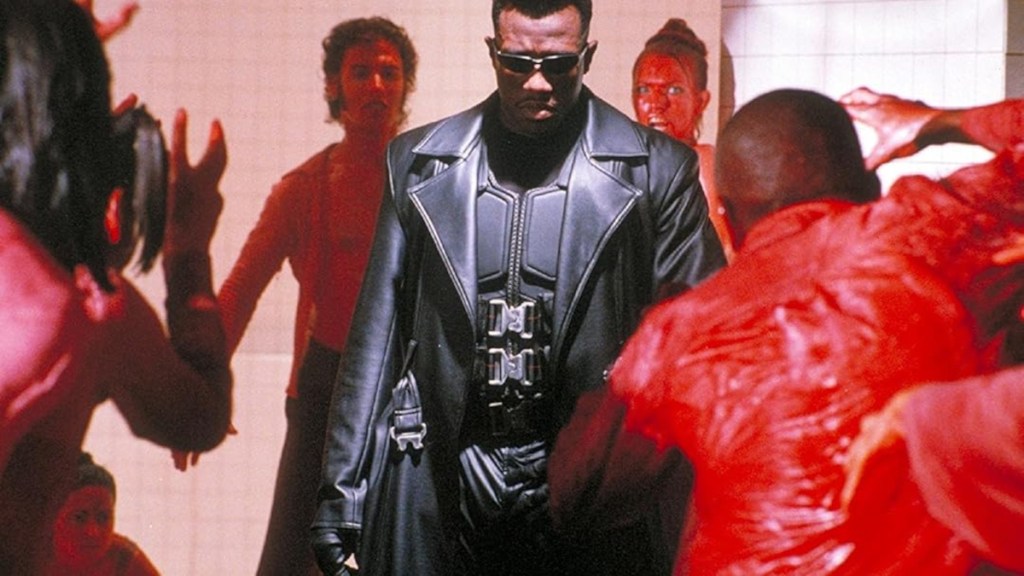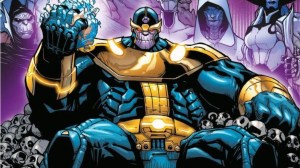In 1998, the landscape of cinema changed forever with the release of Blade. While star Wesley Snipes was already a major box office draw, the character of Blade and all the Marvel lore surrounding him were far from what anyone would consider to be mainstream fixtures; even more daunting was a hard R-rating for the film, which cut down the potential audience for a comic book movie to a slim margin. And yet, despite all those drawbacks (and more that rarely get mentioned), Blade broke out to become a major box office win, as well as a milestone release that opened the door to a whole new era where superhero movie blockbusters became a Hollywood standard.
Videos by ComicBook.com
Cut to 2025, and it seems like the comic book movie revolution seems like it could be in its final, exhaustive stages – unless some major creative revitalization happens. How ironic, then, that now is the perfect time for the Marvel Cinematic Universe to secure its future by looking backward and re-examining how Blade, the Marvel movie that changed the game, worked its magic.
Movie Stars Matter

The first thing that the MCU needs to remember is that movie stars still do, in fact, matter. The biggest draw for Blade upon release was having Wesley Snipes’ name on the marquee. Snipes had become one of the biggest action movie stars in the world as the ’80s testosterone icons (Sylvester Stallone, Arnold Schwarzenegger, Bruce Willis) gave way to a new era of martial arts action stars like Jean-Claude Van Damme, Jackie Chan, and Snipes. Not to mention, Snipes was also one of the biggest African-American stars of the screen, with a fanbase that bridged many demographics. That wide-ranging appeal brought an equally wide-ranging audience to the film, helping a largely unknown Marvel character instantly catapult past any genre stigma. Nearly 30 years later, Blade is still revered as one of the best breakout performances for actor Stephen Dorf, who played the film’s villain, Deacon Frost.
The MCU already knows how lucrative star power can be: after all, the entire franchise was built on the back of Robert Downey Jr., basically becoming Tony Stark/Iron Man, or Samuel L. Jackson connecting franchise threads as the spitting image of (Ultimate) Nick Fury. And yet, as the franchise has continued after Avengers: Endgame, it seems like the value of its brand has overshadowed the value of the stars that prop it up. And while selecting “relative unknowns” or “newcomers” has worked out for the MCU before (see: Iman Villani, Chris Hemsworth, Tom Holland); however, on the whole, Phases 4-6 of the franchise urguably show that trying to release MCU movies without A or B-list stars attached doesn’t work as well as some executives might’ve hoped. The studio needs to be very selective in the future, making sure that a true-blue movie star is at the center of each project. And when you do land a star like multi-Oscar-winner Mahershala Ali, don’t blow it!
Clear & Simple Appeal

There’s a joke that’s been floating around for years that Marvel Studios’ stalling on a Blade reboot film is an egregious miss, as it should be a simple formula to replicate: kick-ass action and vampires. Beneath that humor is a large amount of truth: a Blade movie doesn’t need to be anything more than a kick-ass action movie featuring the added bend of superheroes and vampires. It’s a perfect trifecta of three of the most currently reliable genres of movies: horror, action, and superheroes. More importantly, those are three easy words (“horror, action, superheroes”) for any casual moviegoer to identify as reasons why they should go out and see a Blade movie.
The MCU has, as mentioned, made the mistake of relying on its brand name to provide the incentive for moviegoers to show up in theaters – but that’s not enough. Each Marvel movie needs to have a clear and simple premise and particular appeal that resonates with casual moviegoers, and not just comic book fans. Every project should promise to deliver a relatable cinematic experience (or something completely novel) that goes beyond being ‘another Marvel movie.’ Right now, the projects in the MCU’s “Multiverse Saga” all feel too convoluted to talk up without extensive background information or heavy lobbying about why they deserve a chance for your dollar. These movies should be selling themselves a whole lot more.
Budget Your Budgets

Blade cost $45 million to make, but it played every bit like you would expect from a blockbuster movie. Granted, in 1998, a $45M budget was a much bigger deal – but so was the $130M that the movie made at the box office. Blade (and its sequels) were way ahead of their time – arguably even ahead of where the MCU would be in its heyday. It was proof that comic book movies were a cost-effective enterprise for studios to invest in; the studios chose to (as usual) jump the gun and over-extend, funding projects like X-Men (2000) and Spider-Man (2002) with massive budgets ranging $75M – $150M.
However, every bubble must burst eventually, and it seems pretty apparent that the ceiling for Marvel movie profits has lowered considerably since Endgame. If Blade could mix several genres together into a successful flick for $45M, there are plenty of other Marvel characters and properties that can do the same. That Werewolf By Night special presentation didn’t need a bank-busting budget. Just saying. The MCU has several lanes open to start releasing more mid-budget or even low-budget projects that could turn big profits.
Diversify Your Content

If that feels like a bit of a double-entendre, it very much is meant to. Marvel Studios needs to diversify its content – just the right way, this time. Without re-litigating the entire debate about Marvel Studios’ attempt at (superficial) diversity and alleged pandering, it’s clear that the ‘trying to make something for every group’ approach was not the lesson the studio should’ve taken from the phenomenon theatrical run of Black Panther.
Blade is a strange brew of a movie, the likes of which we haven’t seen since. R-rated horror, and elite martial arts action are a rare combination to begin with; layering in comic book tropes is almost an arrogant level of ambition, by today’s measure. There are weird tonal mashups (Shakespearean drama, gore and fright, comedy), and even subplots that would break most other films – such as the twist that Deacon Frost turned Blade’s mom into a vampire and kept her as a cocubine for years.
And yet, Blade reamins a fan-favored and relevant film in the comic book movie genre precisely because it is such a unique beast. The fact that it’s a black character played by a black lead actor was never made to be the main focus of the film – and yet the effect on both black and non-black viewers was still profound, opening doors to the idea that a wider range of actors, can carry these films. More to the point: Blade proved that Marvel’s bench of potential franchise characters ran much deeper than Spider-Man or the X-Men, when done the right way, with the right genre influences. Without that proof of concept, you may never have seen films centered around Iron Man or Thor ever happen.
As the MCU continues to expand, the Marvel Studios “formula” of moviemaking needs to evolve into a much wider range of film types. DC Studios is doing that with its content, and Werewolf By Night should’ve been a much bigger signal flare that the MCU is primed and ready for a horror-themed corner. Hell, Blade told us that should’ve been thing way back when…
Blade (1998) is streaming on Roku right now.










